Can you cook pork sausage in air fryer? Yes! Learn how to cook raw sausage meat in the air fryer and get my delicious homemade pork sausage patties recipe. Making homemade air fryer sausage patties is easy- no meat grinder required! You get cooking tips for air frying AND for cooking on the stovetop. Serve these pork sausage patties with eggs and fruit for the best breakfast around!
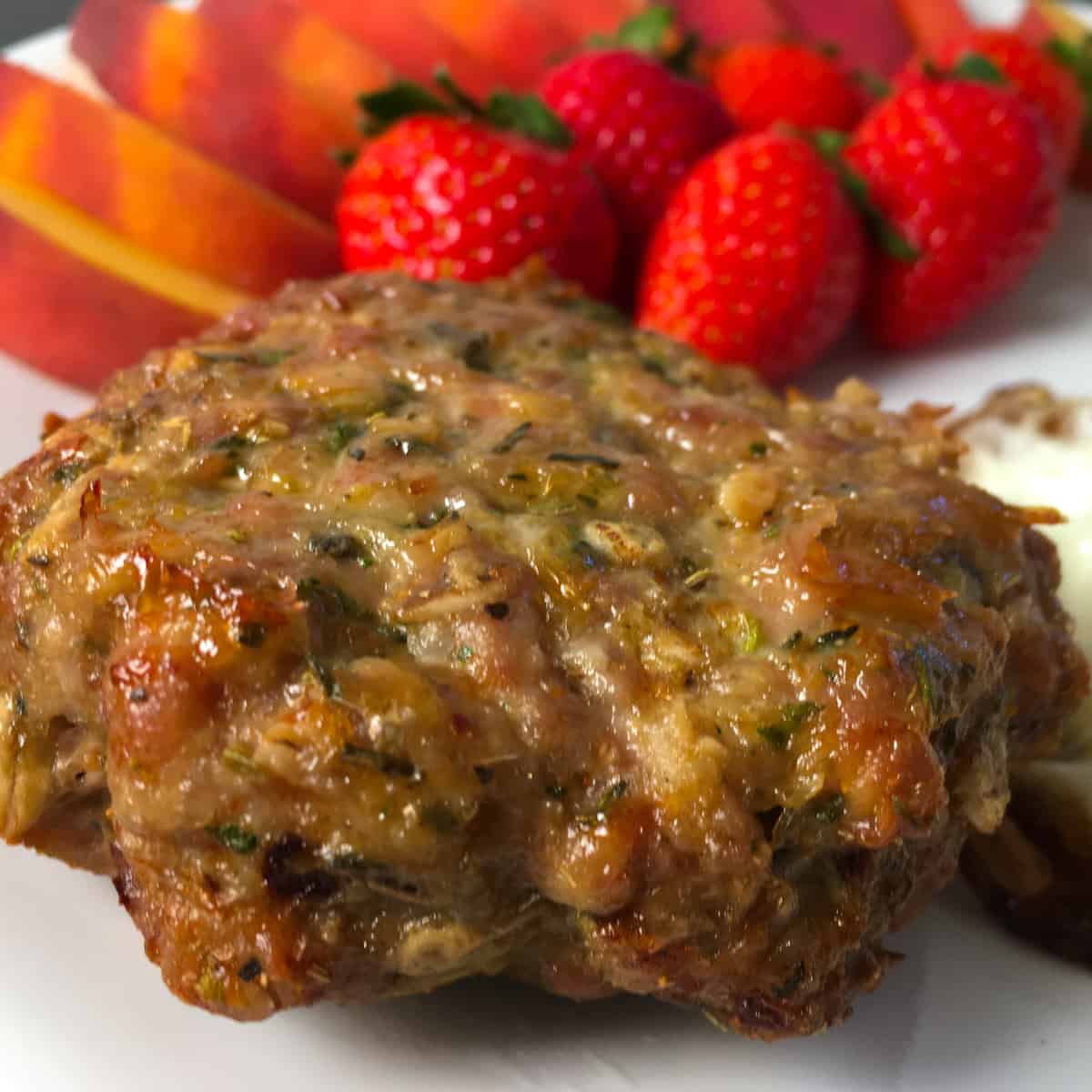
Want to save this post?
Enter your email below and we'll send it straight to your inbox. Plus you'll get great new recipes from us every week!
Table of Contents
⭐ Pork Sausage in Air Fryer
Here are the ingredients you need to make air fryer pork sausage:
- 1 lb ground pork (454g)
- I teaspoon each: dried sage, dried thyme, crushed fennel seeds, dried parsley
- ½ teaspoon each: salt, onion powder, garlic powder
- ¼ teaspoon each: black pepper, red pepper flakes
- ¼ cup dry rolled oatmeal
- 1 large egg
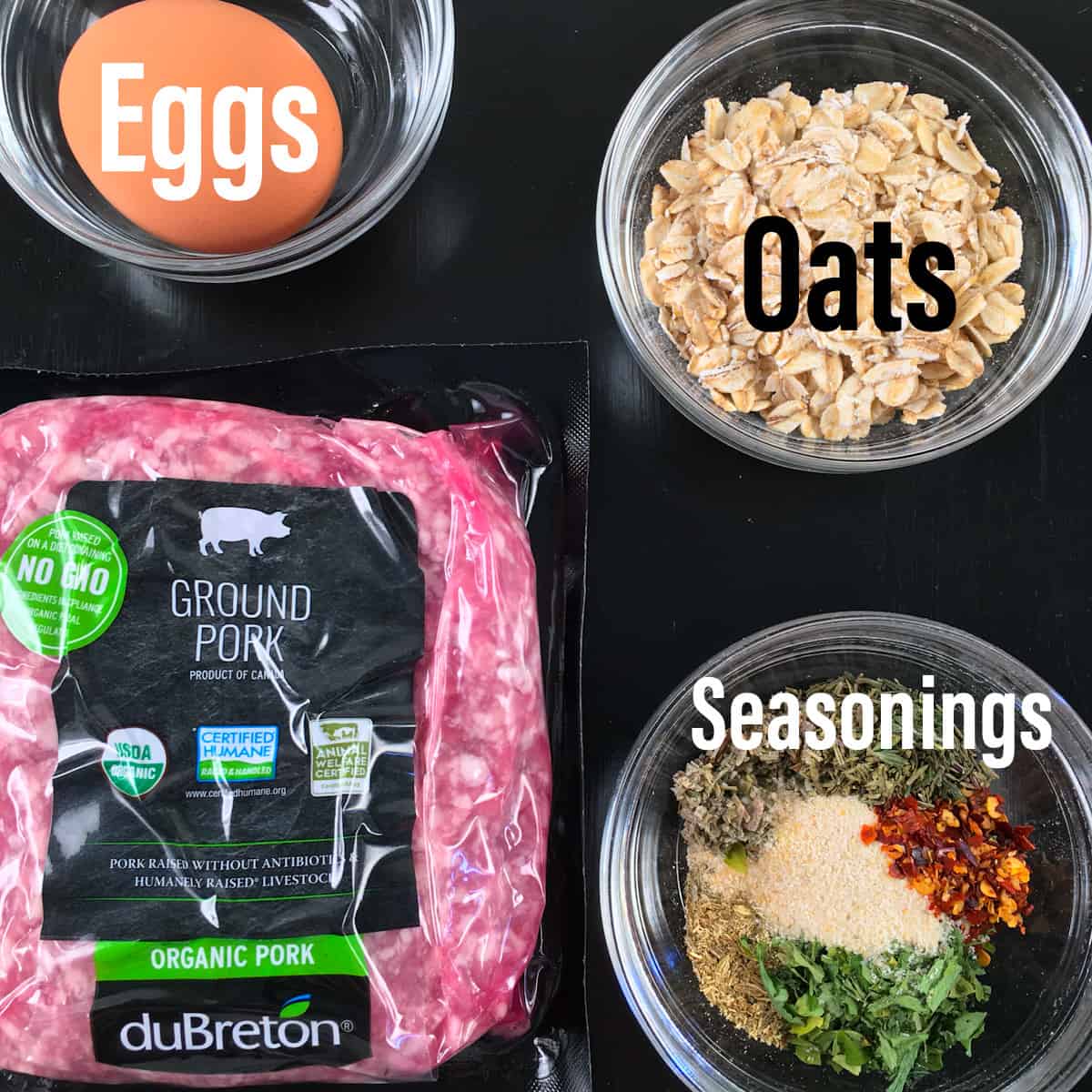
Get a printable recipe card at the end of the post!
The rolled oatmeal and egg act as binders in this recipe. If you want gluten free air fryer pork sausage, make sure the oats you use are certified gluten-free.
You don’t need cooking oil spray because ground pork naturally contains so much fat. Trust me- your sausage patties won’t stick to the air fryer!
To air fry pork sausages, you’ll need an air fryer and a meat thermometer. You can use whatever air fryer you have to cook sausage. The Ninja Foodi, Cosori, Nuwave, Instant Vortex, Cuisinart, Philips, Power Air Fryer, etc. can be used.
As always, keep a close eye on the food the first time you try an air fryer recipe. Cooking times can vary slightly between air fryer brands. You may need to make adjustments to the cooking time depending on which air fryer you use.
🔪 How to Cook Sausage Meat in Air Fryer
Here are the step-by-step instructions for cooking sausage in an air fryer:
Combine all of the pork sausage ingredients with clean hands. When the mixture is uniform, divide it into four equal pieces and shape it into patties. Each patty should be 3-3½ inches (7.6-8.9cm) in diameter and ½-inch thick (1.3cm).
You could also shape the mixture into sausage links, if you’d prefer. (Keep in mind that the cooking times will change if you do this.)
Believe it or not, you’re already ready to cook! The next section will have air fryer directions, followed by stove top directions.
⏲️ How long to cook sausage patties in air fryer?
How long do sausage patties go in an air fryer? Air fry sausage for a total of 10-12 minutes at 375 degrees Fahrenheit (190C).
Preheat the air fryer at 375F (190C) for 5 minutes. Carefully put the sausage patties into the hot air fryer basket. (Air fryer oven: use the top rack position closest to the heating element.)
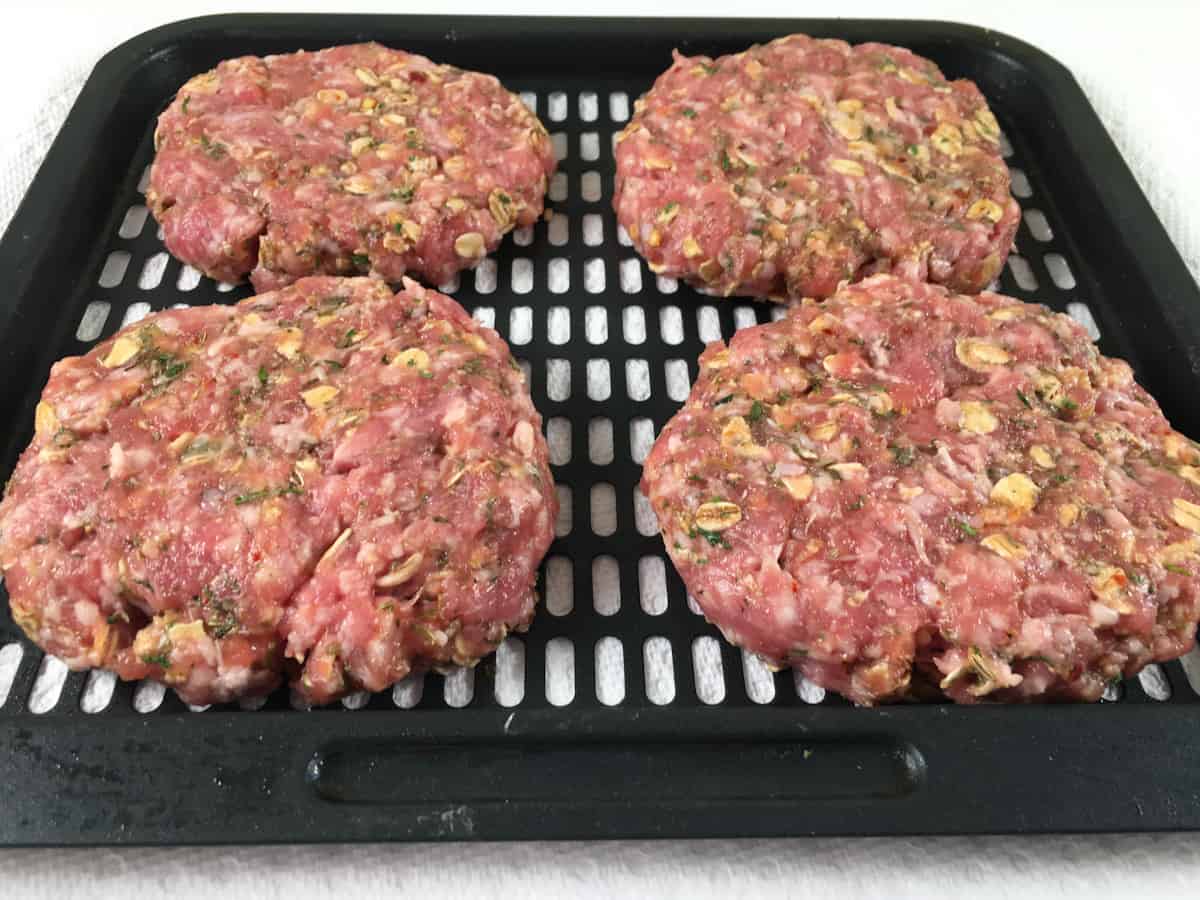
The patties should be in a single layer and should not be touching. It’s important that air can circulate freely to properly cook the patties.
Air fry the patties at 375F (190C) for 7 minutes. Then flip the patties over and cook an additional 3-5 minutes at 375F (190C).
Check to ensure the sausage patties reached a minimum internal temperature of 160F (71C) with a meat thermometer. If they have not, you should air fry them longer until they do.
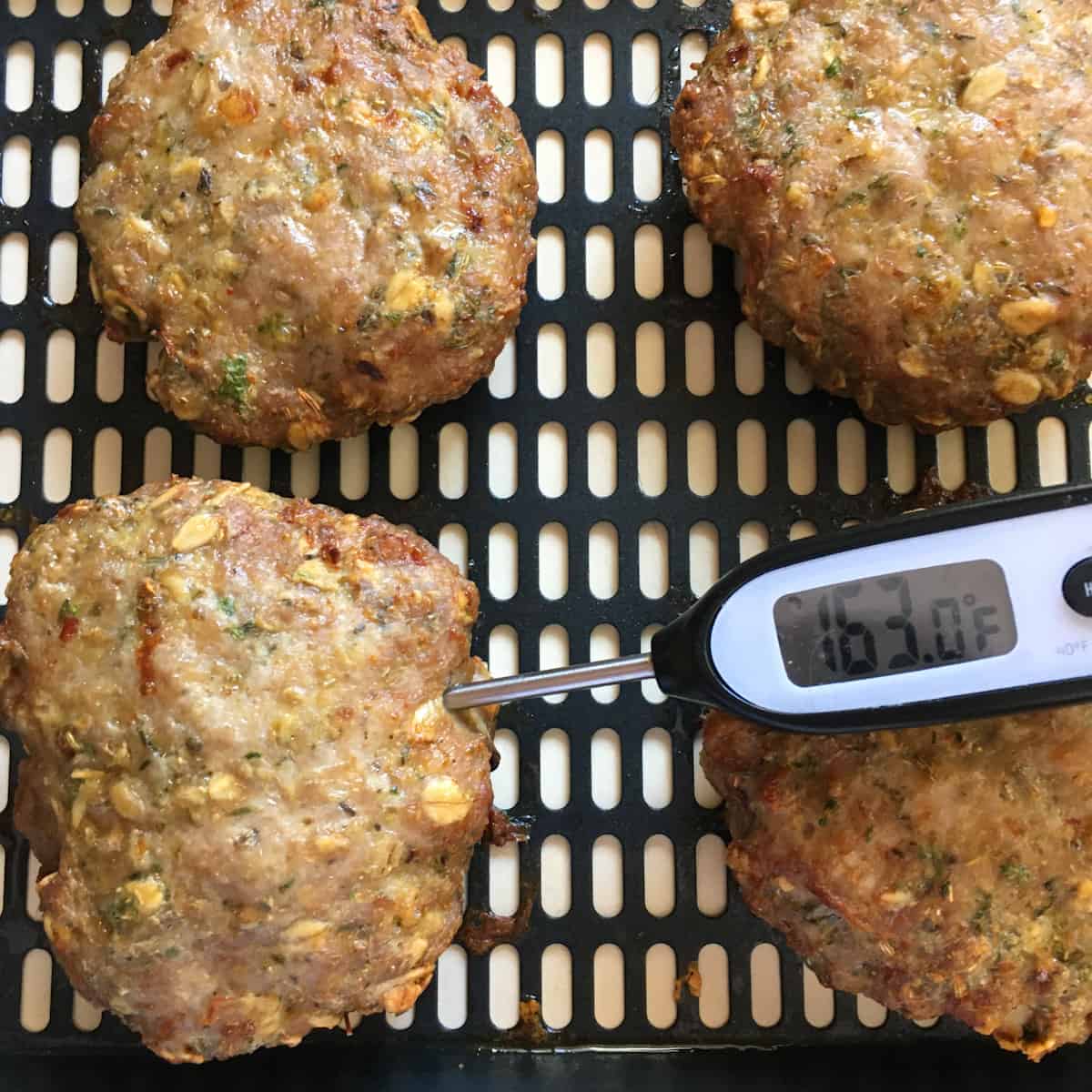
If cooking on the stovetop, start by heating a cast iron skillet over medium heat. Put the patties in a single layer in a skillet. Leave space between the patties to prevent them from sticking together.
Brown the patties for 4-5 minutes per side. Press down on the patties a bit with a spatula when you flip them for more even cooking. The patties are done when they have an internal temperature of at least 160F (71C).
Plate the cooked sausage patties. You can fry eggs with the pork grease left in the skillet.
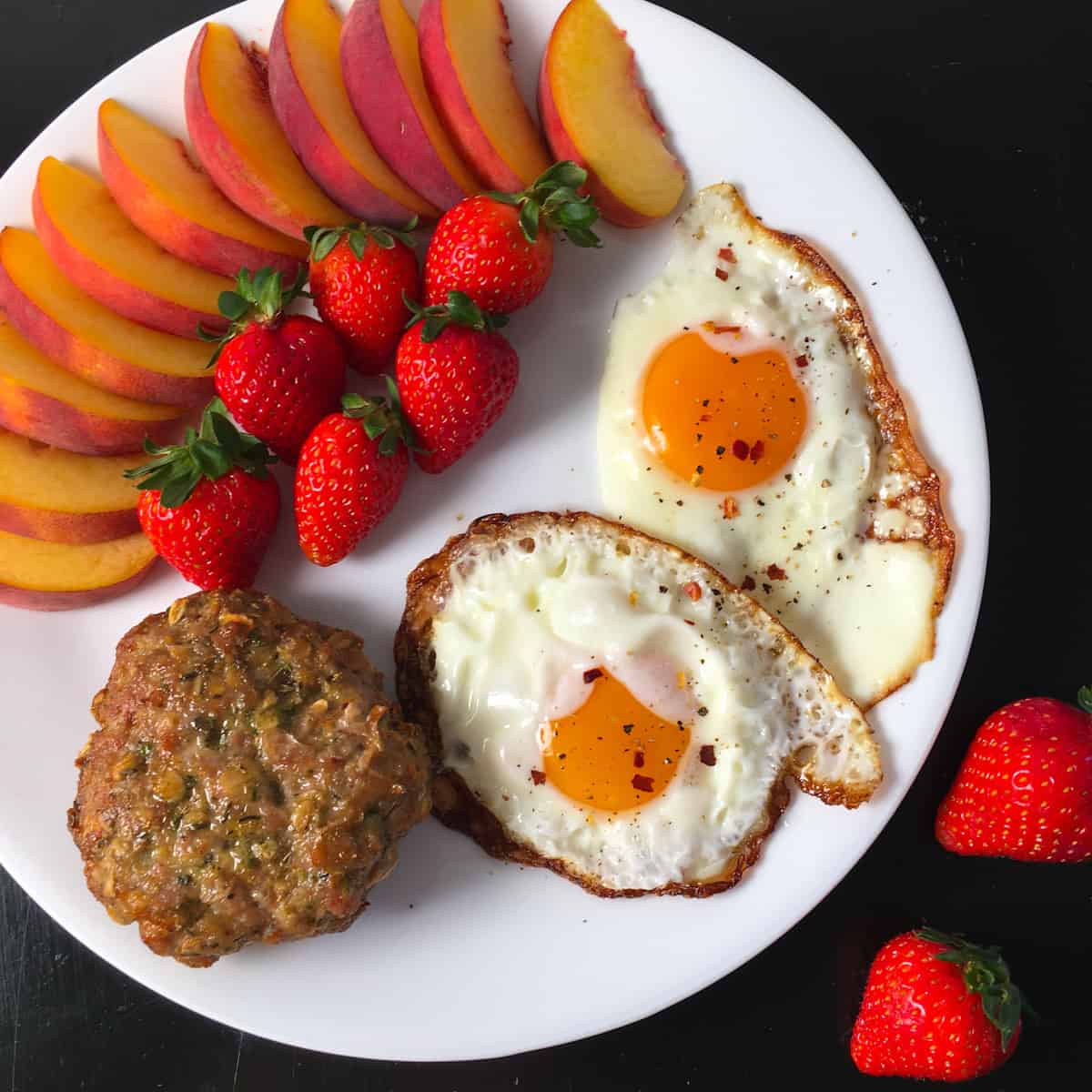
➕ Leftover Ground Sausage Recipes
What do you do with sausage patty leftovers? Your leftover air fried sausage patties will keep for up to 3-4 days in the refrigerator in an airtight container. Try crumbling them up and using them in one of these delicious recipes:
- Sausage Stuffed Portobello Mushrooms (Air Fryer)
- Instant Pot Italian Sausage Soup
- Low Calorie Lasagna Recipe for Weight Loss
Reheating sausage patties in the air fryer (patties that have been fully cooked and refrigerated) is easy. Preheat the air fryer by setting it to 350 degrees Fahrenheit (177C) for 5 minutes. Then put the patties in a single layer on the top tray and air fry at 350F (177C) for 3-5 minutes.
Leftover air fryer sausage patties should reach a safe minimum internal temperature of 165 degrees Fahrenheit (74C). Use a meat thermometer to ensure they are done.
FAQs
How long to cook frozen sausage in air fryer?
Cook frozen sausage patties (like Jimmy Dean, Bob Evans, or Johnsonville sausage patties) in the air fryer at 350F (177C) for 8-10 minutes. Check to ensure they’ve reached a minimum safe internal temperature of 165F before enjoying. These fully cooked sausage patties from the store are thin and have short air frying times.
How to cook sausage patties in the microwave?
Though you could cook this homemade sausage in the microwave, I don’t recommend it. Though it’s possible to cook sausage to a minimum safe internal temperature of 160F in the microwave, it won’t brown. If you like your sausage browned on the outside and moist in the middle, stick to using the air fryer or stovetop.
How to make air fryer sausage patties keto?
To make these air fryer sausage patties keto, try swapping out the oatmeal for almond flour or low-carb bread crumbs. I tried making the sausage without the oats and thought the patties were too dense. You may need to use a smaller volume of almond flour for binding compared to the larger rolled oatmeal flakes.
How to air fry vegan “sausage” patties or vegetarian patties?
Vegan and vegetarian meat analogues often contain less oil than their meat counterparts. Therefore, you may get better results by misting them with cooking oil before air frying. This may help them crisp up and brown a little better on the outside.
👩🍳 Other Air Fryer Sausage Recipes
Don’t miss these other air fryer recipes for sausages:
How to cook Italian sausage in air fryer? Check out my Air Fryer Italian Sausage recipe.
How long to air fry sliced sausage? This Polish Sausage in Air Fryer recipe (AKA kielbasa) is full of flavor and perfect for slicing and serving with mustard.
How to make fully cooked sausage in air fryer? Check out this Precooked Brats in Air Fryer recipe.
You may also enjoy this article on How to Cook Chicken Sausage.
👩🏻🍳 More Homemade Sausage Recipes
Want more recipes for making sausage? If you enjoyed this recipe, why not take things to the next level and make sausage with a meat grinder? You can use whatever cuts of meat or types of meat you want with a meat grinder.
Make a leaner sausage with a combination of chicken and pork. Your fresh sausage will be way tastier than anything you can find in the store. Here are some recipes for sausage to try:
- Homemade Italian Fennel Sausage
- Homemade Sausage (with chicken and feta)
- Chicken Bratwurst with pork
- Chorizo Recipe
📖 Recipe Card
Watch How to Make It!
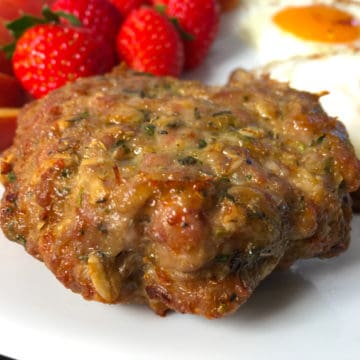
Pork Sausage in Air Fryer Recipe (Air Fryer Sausage Meat)
Ingredients
- 1 lb. ground pork (454 grams)
- 1 teaspoon dried sage
- 1 teaspoon fennel seeds, crushed
- 1 teaspoon dried thyme
- 1 teaspoon dried parsley
- ½ teaspoon salt
- ½ teaspoon onion powder
- ½ teaspoon garlic powder
- ¼ teaspoon black pepper
- ¼ teaspoon red pepper flakes
- ¼ cup rolled oatmeal
- 1 large egg
Instructions
- Combine all of the pork sausage ingredients with clean hands. When the mixture is uniform, divide it into four even pieces. Shape each of the pieces into a large round patty.
To Air Fry Sausage Patties:
- Preheat the air fryer at 375°F (190°C) for 5 minutes. Carefully put the sausage patties in the hot air fryer basket.
- Air fry the patties at 375°F (190°C) for 7 minutes. Then flip the patties over and cook an additional 3-5 minutes at 375°F (190°C).
- Check to ensure the sausage patties reached a minimum internal temperature of 160°F (71°C) with a meat thermometer. If they have not, cook them longer until they do.
Equipment
Notes
💭 Expert Tips from Dietitian Summer Yule
This is a level 2 recipe (transition or weight maintenance). What comes to mind when you think of a healthy breakfast? Does it surprise you that I would consider this sausage patties air fryer recipe to be nutritious (especially when served with eggs and fruit)? Nourishing and delicious animal-based foods can help power up your plate. They can be an important source of high-quality protein, vitamin B12, and highly bioavailable minerals (such as zinc and iron). It’s true that store-bought sausage is the easier option. However, most store-bought breakfast sausage counts as an ultra-processed food. With this homemade pork sausage in an air fryer recipe, you control the ingredients, so there are no unwanted additives. The main downside of pork sausage (for some) is the fat content. If you are trying to eat a lower fat diet, air fried foods can help! When you air fry sausage, a lot of fat drips away while cooking. You can either discard the pork fat or save it for cooking. (As with bacon grease, it’s delicious for roasting vegetables.) Nutrition information is for one serving of pork breakfast sausage.
nutrition info disclaimer
All recipes on this website may or may not be appropriate for you, depending on your medical needs and personal preferences. Consult with a registered dietitian or your physician if you need help determining the dietary pattern that may be best for you.
The nutrition information is an estimate provided as a courtesy. It will differ depending on the specific brands and ingredients that you use. Calorie information on food labels may be inaccurate, so please don't sweat the numbers too much.
"To taste" means to your preferences, which may have to be visual to follow food safety rules. Please don't eat undercooked food x
Nutrition
Join our community! Subscribe for all of the latest and greatest recipes, and follow me on Facebook, Pinterest, Instagram, and YouTube!

Hello! I'm Summer, a registered dietitian and home chef who loves to cook, eat, and create high quality content for you! Every recipe on this site has been tested by me to help ensure your success in the kitchen. All eaters are welcome here 🙂


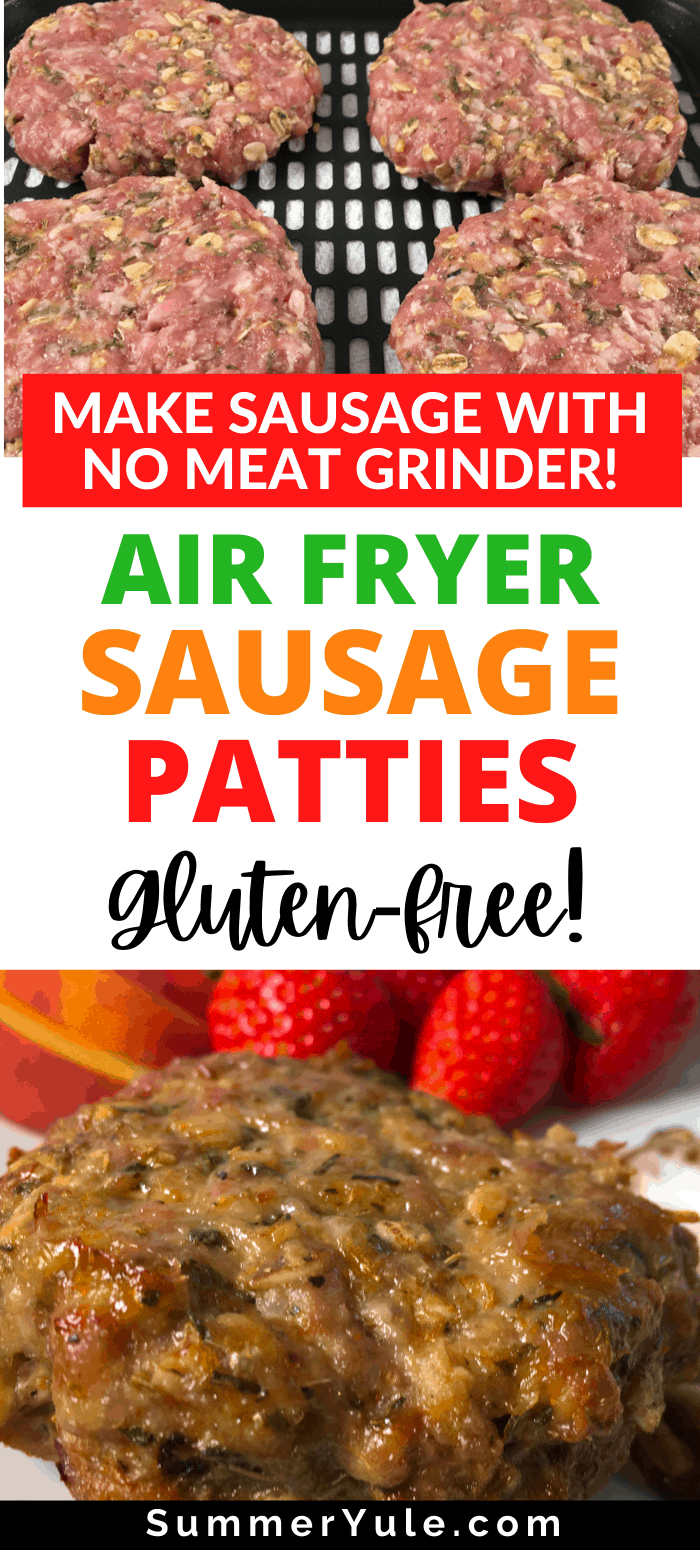
Comments
No Comments